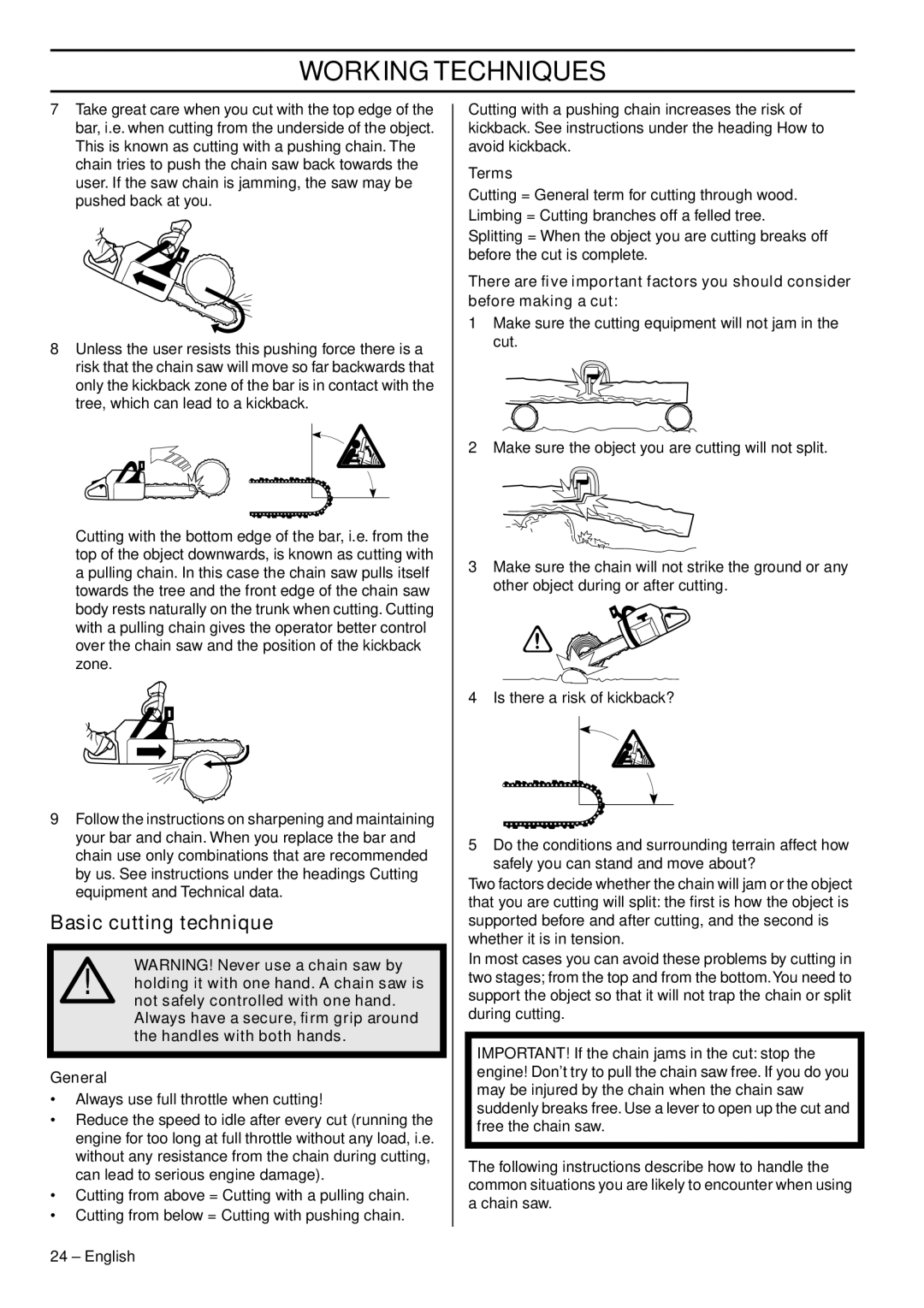CS 2152 EPA III, CS 2153 EPA I specifications
Jonsered, a renowned name in the outdoor power tool industry, has produced a range of high-performance chainsaws designed for both professional and hobbyist use. Two noteworthy models are the Jonsered CS 2153 EPA I and the CS 2152 EPA III. Both chainsaws boast a combination of power, efficiency, and innovative technology, making them ideal for various cutting tasks.The Jonsered CS 2153 EPA I is equipped with a robust 50cc engine that delivers an impressive power output, allowing for quick and efficient cutting through a variety of wood types. The chainsaw features a lightweight design, ensuring ease of handling and reduced fatigue during prolonged use. One of the standout features of the CS 2153 is its Rapid Reaction Start system, which significantly decreases starting effort and ensures a reliable ignition. This makes it particularly convenient for users who need to start the chainsaw multiple times throughout the day.
Additionally, the CS 2153 incorporates an ergonomic handle design, which improves comfort and control. The anti-vibration technology integrated into the saw helps to minimize the amount of vibration transferred to the user's hands, contributing to a smoother operation and less strain during long cutting sessions. Furthermore, the chainsaw comes with a tool-less chain tensioning system, allowing for quick adjustments without the need for additional tools, enhancing efficiency and saving valuable time.
On the other hand, the Jonsered CS 2152 EPA III features a slightly smaller yet powerful 40cc engine, making it an ideal choice for both light-duty and medium-duty cutting applications. Similar to the CS 2153, this model also boasts a lightweight and well-balanced design, making maneuverability easy for users. The CS 2152 is known for its exceptional fuel efficiency, thanks to the innovative X-Torq engine technology, which reduces fuel consumption and minimizes harmful emissions. This feature not only makes it environmentally friendly, but also reduces running costs over time.
Both models highlight Jonsered's commitment to user safety with a chain brake system that stops the chain in the event of kickback and a handguard to protect the user's hands. Overall, the Jonsered CS 2153 EPA I and CS 2152 EPA III are exceptional chainsaws, combining power, efficiency, and comfort in a user-friendly package. Whether you're a professional logger or a homeowner tackling occasional yard work, these chainsaws are sure to meet your cutting needs effectively and reliably.

